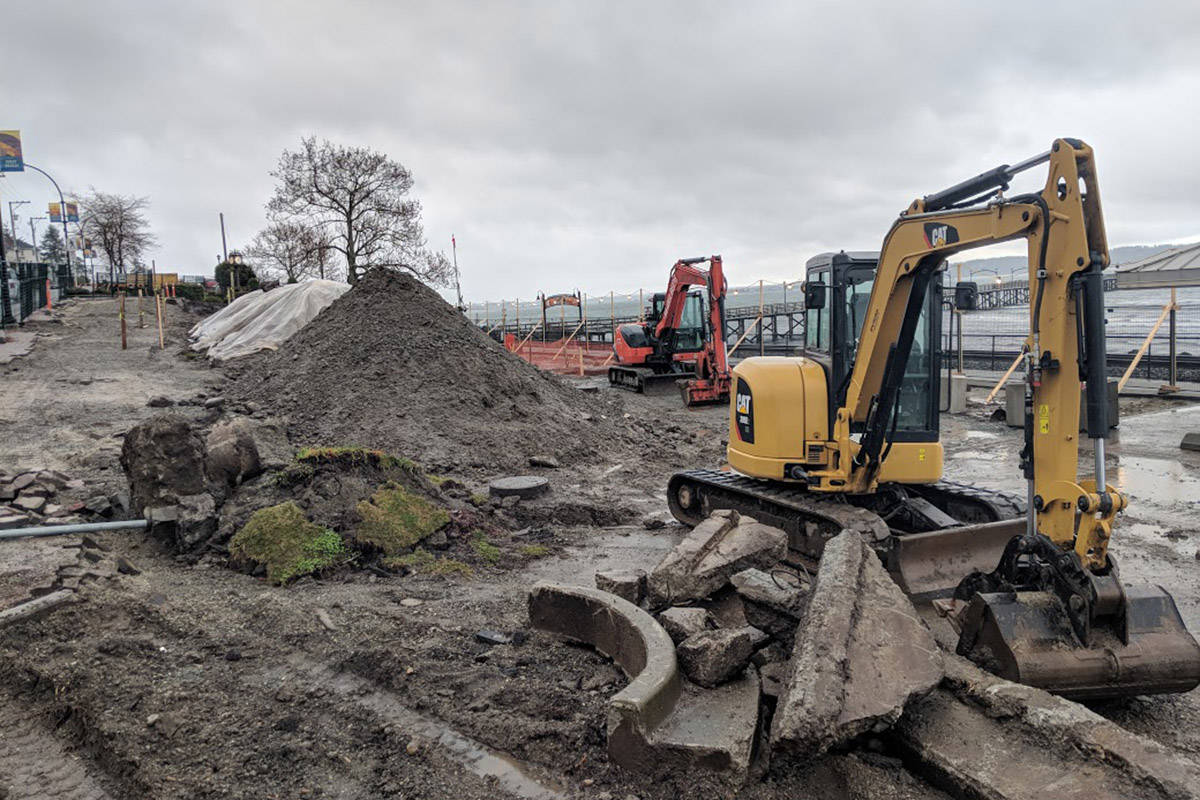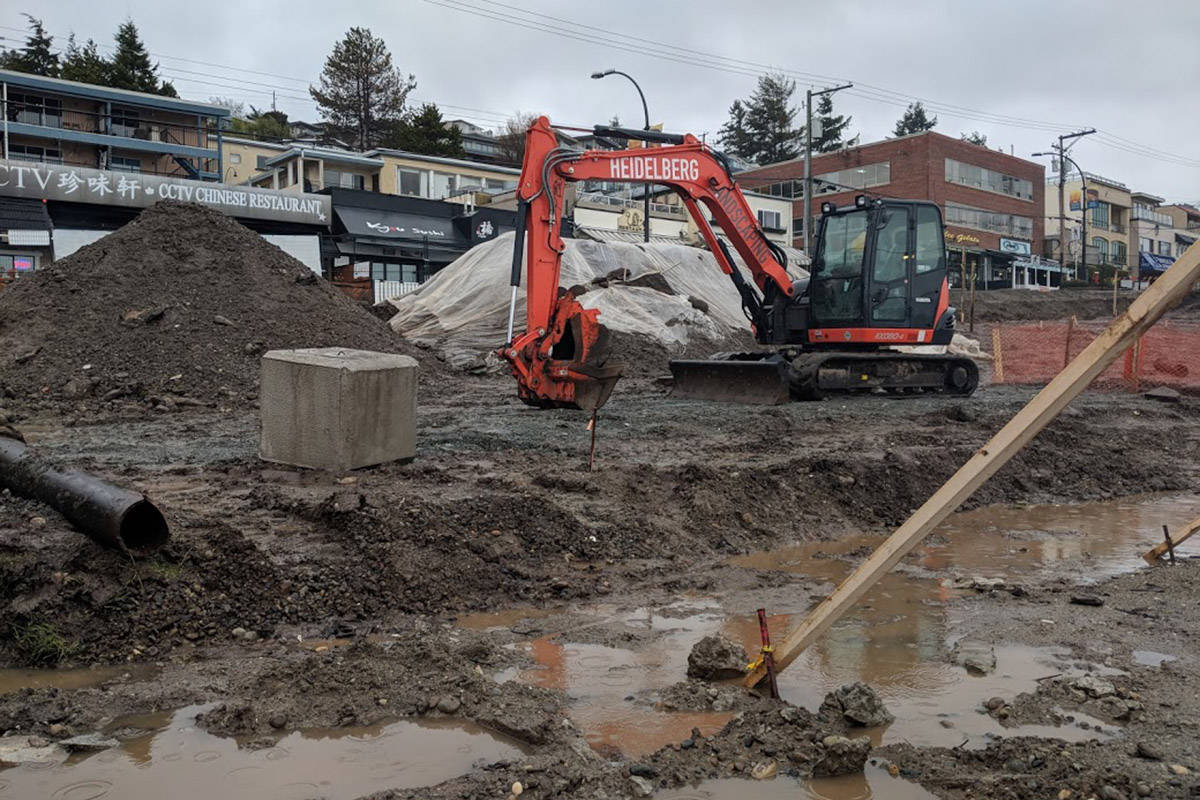Semiahmoo First Nation is working with the City of White Rock and its archeological consultants to assess an archeological site discovered at Memorial Park early this week.
SFN councillor Joanne Charles said Thursday that part of a shell midden was found at the southeast end of the site, below the washrooms and adjacent to the stairway leading down to the pier, during digging to locate utility lines at the Memorial Park property.
Contacted by Peace Arch News, the city confirmed “dark, organic sediments with abundant shell, charcoal, and animal bones were discovered on Monday.”
Shell middens, found in coastal zones around the world, are heaps of mollusk shells, combined with other human-created debris, which can be very significant for archeologists tracing the history and nature of human habitation in a specific area.
A shell midden’s high calcium carbonate content creates a zone of increased alkalinity which counteracts normal soil acidity, helping preserve organic materials such as food remnants, tools, clothing and even human remains. On Canada’s west coast they can extend as much as a kilometre and be several metres deep, depending on the length of human habitation.
“They can be very extensive,” said Charles, who said the site now needs to be registered with the B.C.’s Archeology Branch. “There needs to be further investigation and evaluation.”
Archeological inspection of the site – and monitoring by representatives of SFN and a number of First Nations – is being conducted through a Heritage Inspection Permit issued under Section 14 of the BC Heritage Conservation Act, which protects all documented and undocumented archaeological sites in the province.
“My understanding is that the archeologist (employed by the city) has made an application for an amendment to the permit to allow for an additional buffer outside of the permitted line,” Charles said.
Charles said she believes the processing of that application may take a month or longer.
“It’s going to be a bit of a longer process for us.”
Charles said the latest development vindicates the SFN position on following archeological protocols at the site. She, SFN Chief Harley Chappell and councillor Roxanne Charles presented a cease-and-desist order to the city last September at what was to be the city’s groundbreaking ceremony of its Memorial Park upgrade project, halting work until an agreement could be reached on archeological inspection.
“We wanted due process to be followed,” she said. “We knew that this area was of archeological significance – we knew it had been occupied in times past, historically.”
Earlier this month, the city had reported that nothing had been found at the site.
“We’ve done some non-destructive work at the site and the archeological-impact assessment is continuing,” city manager Dan Bottrill told PAN the second week in January.
“As we expected, the archeological impact work is turning up nothing – it’s just fill.”
Thursday, in response to questions from PAN, city communications manager Farnaz Farrokhi released a statement on behalf of the city.
“We have a Provincial Permit to conduct an Archaeological Impact Assessment (AIA) in conjunction with the Memorial Park Project,” it says.
“The Permit is held by the archeologist hired by the city and testing is being carried out by the archaeologist together with cultural monitors from local First Nations. As part of the testing, dark, organic sediments with abundant shell, charcoal, and animal bones were discovered on Monday.
“This discovery is being investigated further and additional testing will be carried out next week to determine its’ extent and an appropriate course of mitigation.”


